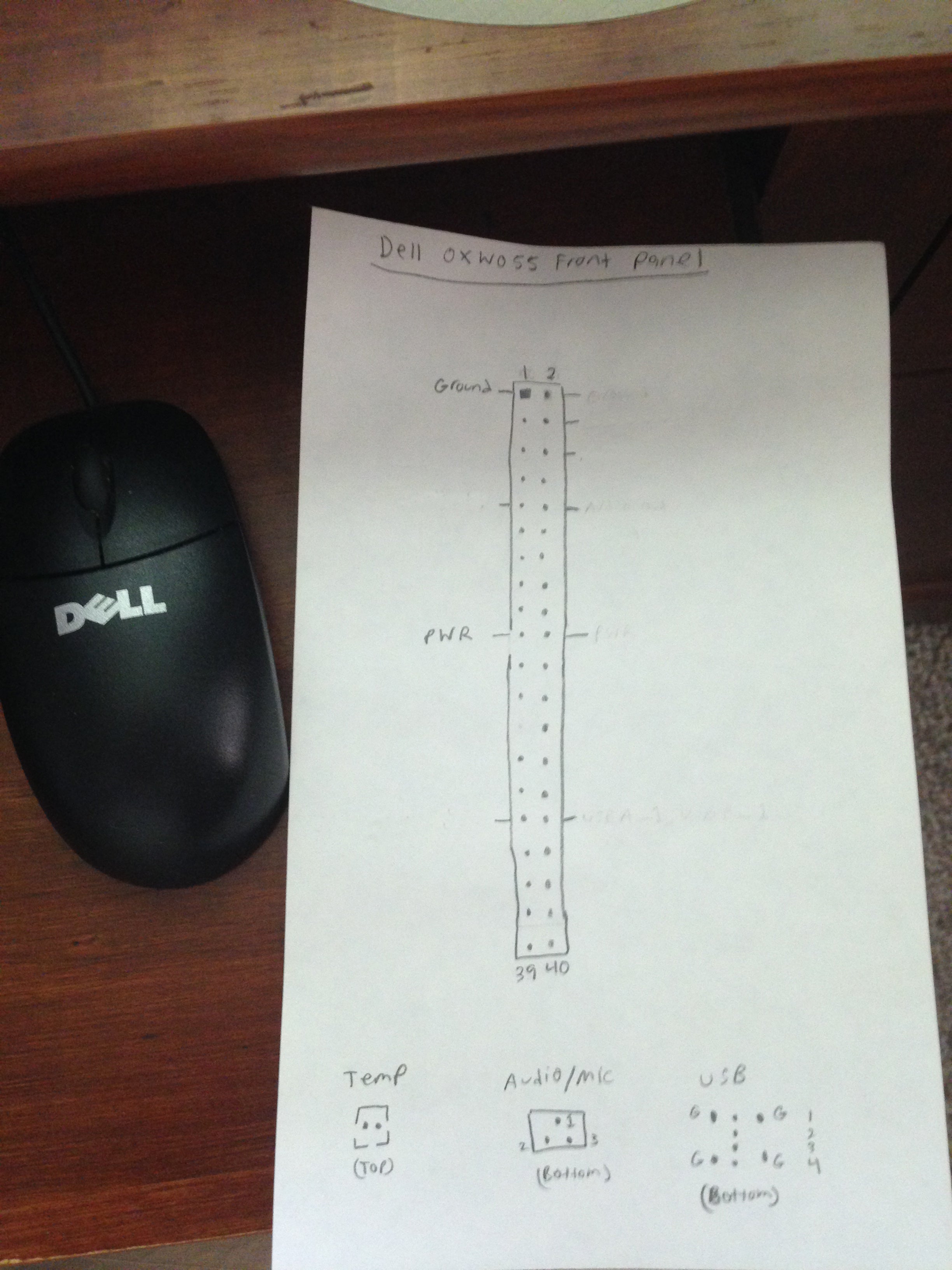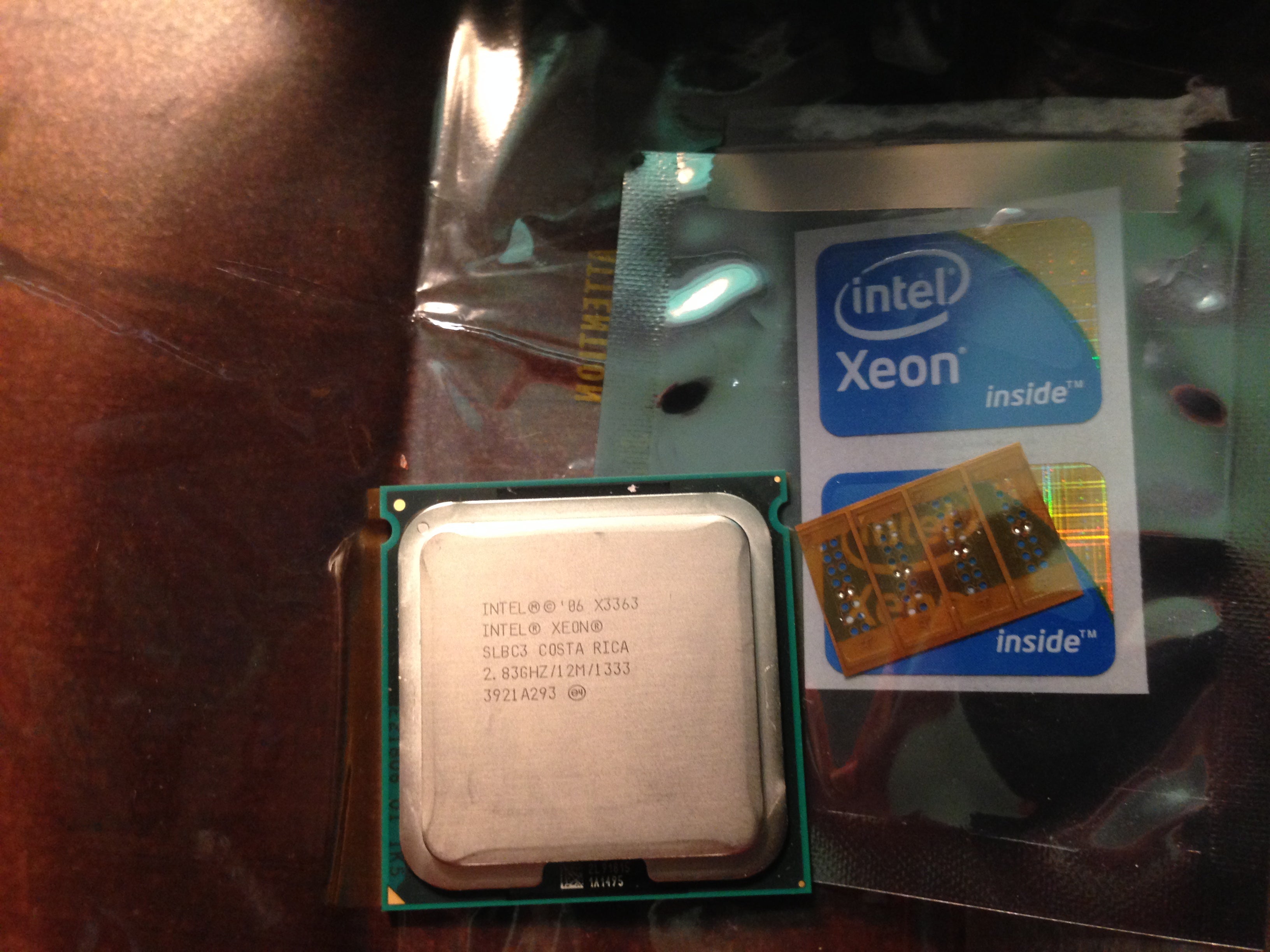 "Boxer_4" (Boxer_4)
"Boxer_4" (Boxer_4)
07/22/2016 at 16:04 • Filed to: None
 5
5
 8
8
 "Boxer_4" (Boxer_4)
"Boxer_4" (Boxer_4)
07/22/2016 at 16:04 • Filed to: None |  5 5
|  8 8 |

I already know what you’re thinking: it doesn’t look like much. In fact, on the outside, it looks like a generic Lenovo small form-factor computer. In all honesty, it really isn’t anything special. However, it is far from ordinary.
This is not meant to be a guide on how to build a computer. In fact, it can be viewed as a guide on how
NOT
to build a computer.
I never intended to build this computer. It just sort of happened. A few weeks before starting the build, during the summer of 2015, I bought a cheap Lenovo m58p small form-factor case off of eBay. The intent was to use it for another project, however that idea fell-through. Stuck with a case that I couldn’t use as I intended, I made a bit of a mistake: I started searching eBay...

Used OEM computer parts are cheap for a reason. I knew this fully well going into this project. However, the deal I found was too good to pass up: a Dell Optiplex 780 motherboard, complete with E8400 3.0Ghz Core 2 Duo processor for $12. This was significantly better than any desktop I had owned before (Pentium D, anyone?), so...
With that decision made, it was time to find more components for the build. Back to eBay it was...a 275W Dell Optiplex 755 small form-factor power supply for $16, an Optiplex 740 heat sink for $6, and two 2GB cards of DDR3 RAM for $15. Everything else I used I already had on hand. Now that I had everything I needed, it was time to build.
I had worked on computers for several years at this point in time, so I was looking for a challenge. This computer certainly provided one. The first step was to mount the Dell motherboard into the Lenovo case. Simple enough, right? While everything on the motherboard lined up on the case, the case used rubber donut mount standoffs (probably not the proper term), which were incompatible with the motherboard. After dremeling, drilling, and tapping the original standoffs, the motherboard was finally mounted. It was during this time I also made brackets to mount the heat sink (what, you thought it would bolt right up?). Next up, getting power to the motherboard...

I chose an Optiplex 755 small form-factor power supply for two reasons: 1) it’s a 275W power supply, rather than 225W, (the power supply found in the Optiplex 780 small form-factor) 2) it was $10 cheaper.
However, the 755 power supply was incompatible with the 780 motherboard. Not only did the 780 motherboard require a mini-atx 24 pin connector (the 755 power supply used standard atx), but the pinout was also completely different. No matter; with some research, and a bit of soldering work, I ended up with an adapter...

Sorry for the out-of-focus picture
The last step was actually turning on the computer, another simple task made difficult by Dell. Most Dell computers use a proprietary front panel connector to control the power button, front audio jacks, and front USB connectors. The motherboard had solutions for the USB connectors, and I used a USB sound card for the front audio jacks, but that still didn’t solve the issue of the power button. After some probing with a multi-meter, I arrived at a solution:

Incomplete pin-out, but I only cared about the power switch
By using jumper wires from the Lenovo’s power button to the front panel connector on the Dell motherboard, I now had a computer I could turn on and use (so long as you are fine pressing F1 every time you start the computer).
A fresh install of Windows 7 Professional later, and I was good to go.
I used this computer nearly 2,000 hours over 8 months without a single glitch. However, after 8 months...

...the modding bug got me. Having read that it was possible to run an LGA 771 Xeon in an LGA 775 motherboard, I knew I had to try it. Details on the mod can be found !!!error: Indecipherable SUB-paragraph formatting!!! . Long story short, it requires a sticker to flip some pins on the processor, a small modification to the processor socket, and a !!!error: Indecipherable SUB-paragraph formatting!!! . As a result, I managed to upgrade to a workable Quad Core processor for $25 (a straight compatible Core 2 Quad is upwards of $45).
Of course faster processors generally require better cooling; this was no exception...

After some initial temperature issues, I ended up solving the problem with a heat sink from a Pentium 4 Optiplex 740 ($8, I could have saved $6 had I bought this one in the first place), and an extra fan. A $20 2GB HD 6570 graphics card, an extra 2GB DDR3 card of RAM for $6, a spare SSD I had laying around (in addition to the old HDD), and a fresh copy of Windows 7 Ultimate rounded out the upgrades.
Those who don’t like looking at messy cables, look away now...

It’s running better than ever; twice as fast as the original configuration (which isn’t saying too much, however, it meets my needs). Would I have been better off just buying something equivalent outright? Probably. However, I had a lot of fun in the process, and I wouldn’t have it any other way.
 Nibby
> Boxer_4
Nibby
> Boxer_4
07/22/2016 at 16:15 |
|
awww yes, nice job! You DIY’d a bunch of OEM proprieatry parts together. That ain’t easy.
 Boxer_4
> Nibby
Boxer_4
> Nibby
07/22/2016 at 17:22 |
|
Thanks!
I’m not sure what’s nuttier; the fact that I built this, or the fact that this is basically my primary computer!
 RallyDarkstrike - Fan of 2-cyl FIATs, Eastern Bloc & Kei cars
> Boxer_4
RallyDarkstrike - Fan of 2-cyl FIATs, Eastern Bloc & Kei cars
> Boxer_4
07/22/2016 at 18:38 |
|
Very nice! Did you ever try dual-booting with a Linux install? I bet it would run even faster than Windows! :D
(Not to poo-poo Windows, I have no issues with Windows at all - use Win10 Pro on my main desktop [only upgraded to that from Win7 Ultimate 2 days ago])
I mention it because I have my old desktop and two older laptops running Linux Mint and it’s fun to tinker around with and is genuinely usable for everyday tasks with no problems! :)
 R Saldana [|Oo|======|oO|] - BTC/ETH/LTC Prophet
> Boxer_4
R Saldana [|Oo|======|oO|] - BTC/ETH/LTC Prophet
> Boxer_4
07/23/2016 at 08:38 |
|
Expected custom build in OEM case because funny, realized it was a cobbled together Hodge podge of OEM bits. Why didn’t you just do an itx build with a Pentium G series socket 1151 so you had headroom to upgrade and mod later?
Also OEM ketchup and mustard are disgusting.
 Boxer_4
> R Saldana [|Oo|======|oO|] - BTC/ETH/LTC Prophet
Boxer_4
> R Saldana [|Oo|======|oO|] - BTC/ETH/LTC Prophet
07/23/2016 at 10:20 |
|
For some reason, both Dell and Lenovo were still using a variant of BTX for their small form-factor computers. That made it fairly difficult to find a compatible motherboard that supported “newer” hardware (not that I looked too hard).
Had this been a serious build, I wouldn’t have used this case (or most of the components I used). This started as “what can I do with this spare case”, which morphed into “how much of a mess can I make this computer and still have it function well” (hence the probably unnecessary Xeon upgrade). It was meant as a fun project, and somehow resulted in a functional computer that meets what I need out of it.
This computer still beats the desktop it effectively replaces (a Pentium D 945 Gateway), though, it’s not my best computer (I have an i7 Lenovo W530 for that).
Also, I kind of like the ketchup and mustard look in this instance... it gives it that “almost OEM” look.
 Boxer_4
> RallyDarkstrike - Fan of 2-cyl FIATs, Eastern Bloc & Kei cars
Boxer_4
> RallyDarkstrike - Fan of 2-cyl FIATs, Eastern Bloc & Kei cars
07/23/2016 at 10:22 |
|
I hadn’t thought about it, but that’s not a bad idea. A friend of mine is starting to look into Mint, and it seems fairly decent from what I’ve seen so far.
It may be my next stop after Windows 7 becomes unsupported, since my dealings with 10 so far are enough to drive me over the edge...
 RallyDarkstrike - Fan of 2-cyl FIATs, Eastern Bloc & Kei cars
> Boxer_4
RallyDarkstrike - Fan of 2-cyl FIATs, Eastern Bloc & Kei cars
> Boxer_4
07/23/2016 at 19:40 |
|
I just upgraded from 7 to 10 3 days ago, all well here so far (crosses fingers).
 Roundbadge
> Boxer_4
Roundbadge
> Boxer_4
07/26/2016 at 13:00 |
|
I’ve been using Mint for a few weeks on an older dual-core Latitude. It’s pretty quick and not all that difficult to use, so long as you’re cool with learning Linux. Honestly, it’s downright Windows-esque.